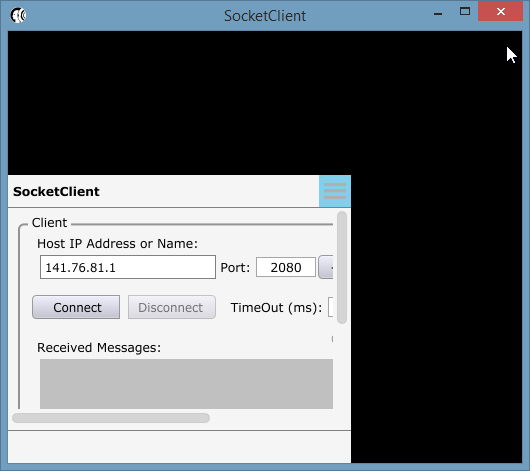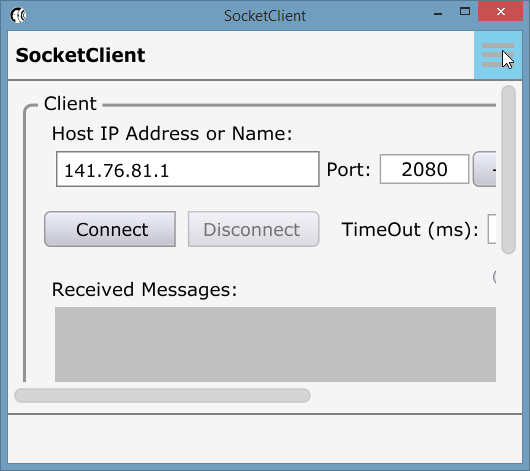I´m trying to create an app on both ios and android.
ios seems to work ok, but on my android device (HTC One M8) the UI and text is super-small.
The app fills the entire screen but everything is very small.
fo laying out my buttons / text I use relative values (for example a button that covers 50% of the height)
But something is cleary wrong since text is very small etc.
What is the thing to do here?
I tried to mess with Desktop::setGlobalScaleFactor() but that does not seem to work.
I though I could figure something out based on the dpi values.
Anyone has any ideas about this?
After looking at it a bit more, I´m not even sure what I´m asking for
I guess i'm looking for a "best-practise" tip for makeing the ui look about the same on each platform,. First priority is to make the fonts bigger, and consistent.
fr810
June 15, 2015, 3:53pm
3
We have a fix for this problem and we will push it to master once Jules has got a chance to review the code.
fr810
June 15, 2015, 5:09pm
4
This is now fixed on the latest tip.
Thank you for the fast update. Tested and it works GREAT!
thank you
Great news thanks Fabian and co
Tank you. But it seems not to work right with OpenGL.
I try to use an OpenGLContext for the top level component. So in the constructor of the main window i call:
Desktop::getInstance().setGlobalScaleFactor(1.5);
openGLContext->attachTo(*getTopLevelComponent());
The display renders wrong scaled, while mouse handling uses the scale factor.
The problem occured on both of my target platforms, Windows and Andoid.
See the following screenshots (left with opengl, right how it looks without openGL).
(Also notice where the mouse cursor is positioned to highlight the upper right menu button.)
Wrong, with OpenGL context:
Right, without OpenGL (how it should be):
Is it possible to fix this?
I can confirm this is working for me. Now it looks much closer to what I see on my Mac and Introjucer, i.e. not so small.
also see following thread: see http://www.juce.com/forum/topic/setglobalscalingfactor-and-opengl
rory
December 16, 2015, 3:00pm
10
I've just hit the same problem as mentioned above. I'm using JUCE 4.02 and Android 5.1.1. Calling Desktop::getInstance().setGlobalScaleFactor() with anything but a 1 moves and reszies my OpenGL window to the top right hand corner of my handset. It works fine with the software renderer, so I'm sure my scaling factors are correct. Any ideas?
fr810
December 29, 2015, 1:02pm
11
This sounds like a JUCE bug. I'll have a look at it. It only seems to occur if you change the defaultScale factor manually via setGlobalScaleFactor.
In the mean time you can set the default scaling factor by changing the calculation on line juce_gui_basics/native/juce_android_Windowing.cpp:744 . This seems to work for me.
rory
December 29, 2015, 4:29pm
12
I'm glad you think it may be bug. I was beginning to doubt myself! For now I'm dynamically resizing all components which works, but is not ideal. Please let us know when you find a fix. Thank you.
rory
January 13, 2016, 4:18pm
13
Any movement on this? Can you at least confirm there is something afoot here? Thanks.
Alan
February 27, 2016, 5:42pm
14
Yeah as Fabian says you can workaround this by forcing the d.scale value in the findDisplays method (the line # that Fabian gave is not good anymore).
It would be great that this be fixed, however, as it is an important feature to develop cross-platform...
Alan
February 28, 2016, 11:03am
15
Any short-term plan to fix this ?
Thanks
rory
February 16, 2024, 2:38pm
16
I’m seeing the same issues in the latest release of JUCE
I’m also still seeing this!
FWIW, I’ve created a detailed bug report here, which I hope is sufficient to assist in fixing the problem!
I’ve been investigating Android use of UI Scale Factor, which doesn’t work properly for me.
General symptoms:
the UI scales as expected, but the app window doesn’t fill the screen and can be offset [expected behaviour: fill the screen as on iOS]
touch events are scaled correctly (but can be offset), but only work in an increasingly small area of window (the bottom and right areas become unresponsive as the scaling factor increases!) [expected behaviour: respond accurately in the full app dis…
Edit: the linked post includes two patches I’ve created, which fix the use of Scaling Factor on Android. I hope this helps!
Best wishes, pete


